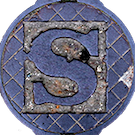Akila Wijerathna-Yapa: Difference between revisions
No edit summary |
No edit summary |
||
| (2 intermediate revisions by one other user not shown) | |||
| Line 1: | Line 1: | ||
{{Participant | {{Participant | ||
|Timezone=Australia/Brisbane (GMT+10:00/GMT+10:00) | |Timezone=Australia/Brisbane (GMT+10:00/GMT+10:00) | ||
|Affiliation=ARC Centre of Excellence for Plant Success, University of Queensland | |Affiliation=[https://www.plantsuccess.org/ ARC Centre of Excellence for Plant Success in Nature and Agriculture], [https://en.wikipedia.org/wiki/University_of_Queensland The University of Queensland] | ||
|Table Assignment=Table 2 | |Table Assignment=Table 2 | ||
}} | }} | ||
{{Workshop Submission | {{Workshop Submission | ||
|Interest=We use knowledge of networks, multidisciplinary hypothesis-driven mechanistic modeling, molecular plant physiology, genetics, and genomics approach to understand how plants regulate bud outgrowth and discover new network components that facilitate breeding. I | |Interest=We use knowledge of networks, multidisciplinary hypothesis-driven mechanistic modeling, molecular plant physiology, genetics, and genomics approach to understand how plants regulate bud outgrowth and discover new network components that facilitate breeding. I look forward to learning how the community uses Computer-Supported tools for hypothesis and evidence synthesis for life science research. | ||
|Frame=Practitioner | |Frame=Practitioner | ||
|Materials= | |Materials=I am interested in using prior knowledge for plant phenotypic prediction research in predictive breeding. Today we have a substantial understanding of the biology of how plant regulates their phenotypes—however, this information accumulated over the years and scattered. Therefore I am keen to build a knowledge network that mathematicians and computational modelers can use this knowledge network to develop algorithms to predict phenotypes. | ||
|Organizer Topics=Research Data, Graphs | As a first challenge of the project, I have to bridge the gap between computational biologists and wet lab researchers to communicate biology to understand molecular physiological mechanisms. For this, I'm intended to use Systems Biology Graphical Notations. By joining CSCW 2022, I would like to learn how to use markdown-based note-taking Apps (i.e., [https://logseq.com/ LogSeq], [https://obsidian.md/ Obsidian], [https://roamresearch.com/ Roam Research]) to synthesize the knowledge and import it into [https://en.wikipedia.org/wiki/Systems_Biology_Graphical_Notation Systems biology graphical notation markup language] to create the network. | ||
|Organizer Topics=Research Data, Knowledge Graphs, Knowledge Network, [https://sbgn.github.io/ Systems Biology Graphical Notation (SBGN)] | |||
}} | }} | ||
Latest revision as of 00:43, 12 November 2022
| Akila Wijerathna-Yapa | |
|---|---|
| Timezone | Australia/Brisbane (GMT+10:00/GMT+10:00) |
| Institutional Affiliation(s) | [[Affiliated With::ARC Centre of Excellence for Plant Success in Nature and Agriculture]], [[Affiliated With::The University of Queensland]]
|
| Group(s) | Table 2, Computable Graphs |
| Table Assignment | Table 2
|
Discord
Page Schemas#Creating a new Schema Page schemas is mostly a handy way to generate boilerplate templates and link them to semantic properties. A Form (using Page Forms is something that is an interface for filling in values for a template.
For an example of how this shakes out, see Category:Participant Template:Participant Form:Participant
- go to a `Category:CategoryName` page, creating it if it doesn't already exist.
- Click "Create schema" in top right
- If you want a form, check the "Form" box. it is possible to make a schema without a form. The schema just defines what pages will be generated, and the generated pages can be further edited afterwards (note that this might make them inconsistent with the schema)
- Click "add template" If you are only planning on having one template per category, name the template the same thing as the category.
- Add fields! Each field can have a corresponding form input (with a type, eg. a textbox, token input, date selector, etc.) and a semantic property.
- Once you're finished, save the schema
- Click "Generate pages" on the category page. Typically you want to uncheck any pages that are already bluelinks so you don't overwrite them. You might have to do the 'generate pages' step a few times, and it can take a few minutes, bc it's pretty buggy.
Workshop Submission
What's your interest in this workshop?
With what "frame" do you approach the workshop? (or identity)?
Practitioner
What materials can you contribute to the workshop for consideration?
I am interested in using prior knowledge for plant phenotypic prediction research in predictive breeding. Today we have a substantial understanding of the biology of how plant regulates their phenotypes—however, this information accumulated over the years and scattered. Therefore I am keen to build a knowledge network that mathematicians and computational modelers can use this knowledge network to develop algorithms to predict phenotypes. As a first challenge of the project, I have to bridge the gap between computational biologists and wet lab researchers to communicate biology to understand molecular physiological mechanisms. For this, I'm intended to use Systems Biology Graphical Notations. By joining CSCW 2022, I would like to learn how to use markdown-based note-taking Apps (i.e., LogSeq, Obsidian, Roam Research) to synthesize the knowledge and import it into Systems biology graphical notation markup language to create the network.
Organizer-estimated Topics
Research Data, Knowledge Graphs, Knowledge Network, [[Interested In::Systems Biology Graphical Notation (SBGN)]]
